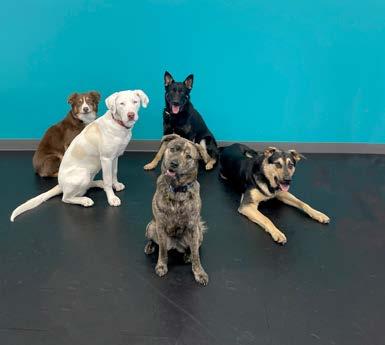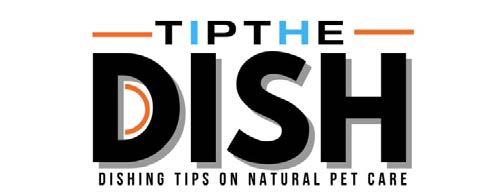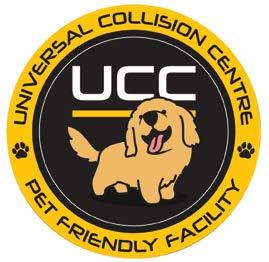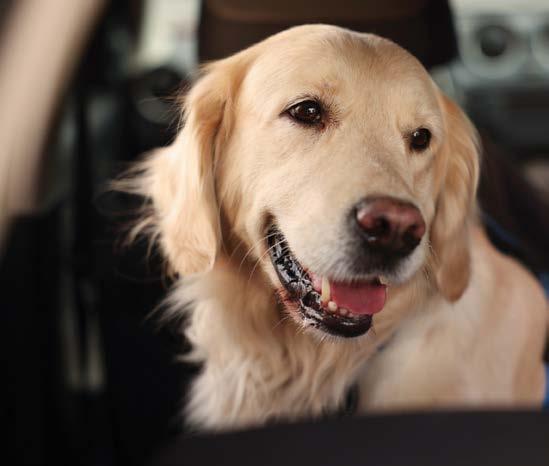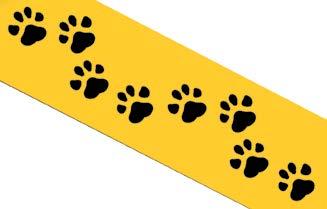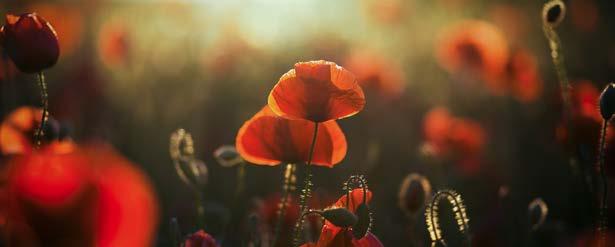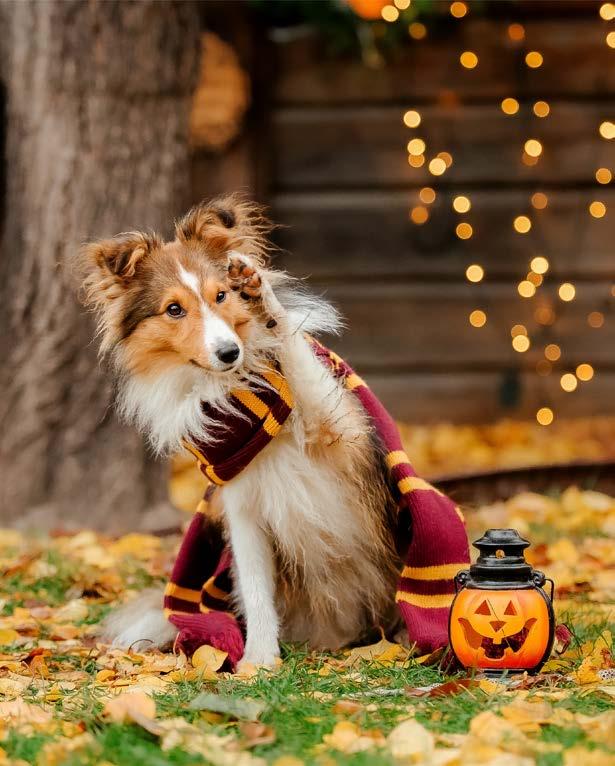
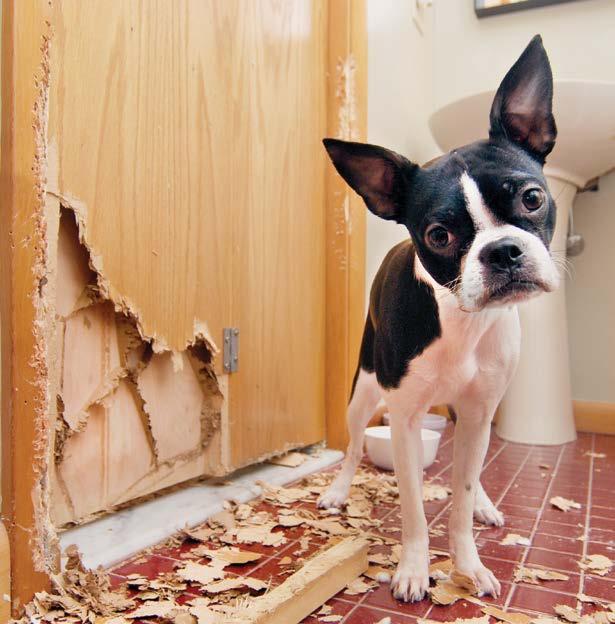
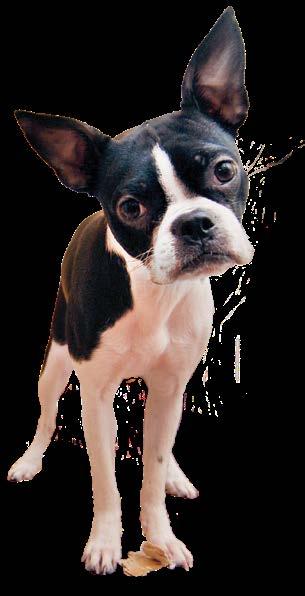

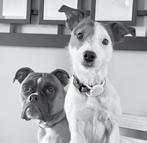






PQ Staff
With autumn upon us, we present the second annual Fall edition of Paw Quarterly, a magazine for you, our dog-loving friends. The Dog Days of Summer are sadly behind us and we are now starting to bring out the coats and ready ourselves for winter.
In this issue we honour the valiant Dogs of War, reflecting on their loyalty and bravery as we approach Remembrance Day. With the holiday season around the corner, safety becomes top of mind, offering a gentle reminder to keep our furry friends safe and secure amidst the festivities. We delve into the topic of talented dogs versus dedicated trainers, what it takes to lead to success. For those seeking joy in the outdoors, it provides tips for the dog park, ensuring both pets and owners have a happy and safe experience. Scent work is explored from the human perspective, emphasizing the importance of understanding and guiding our canine companions through their sniffing journeys. We embrace the mantra "Keep Calm and Train On," underscoring the influence of our energy on our dogs, advocating for a calm and assertive presence. Senior dogs are not forgotten, with enriching activities suggested to enhance their golden years, keeping their minds sharp and spirits high. Lastly, the hidden value in portrait photography, capturing the essence of our beloved companions in timeless images that speak to the heart.
Paw Quarterly's latest issue is a celebration of the enduring bond between humans and dogs, filled with wisdom and warmth for the season ahead.
PAWQuarterly FALL 2024
Volume 2 | Issue 4
CONTRIBUTING EDITOR
Rob Caleval
EDITORIAL & SALES
publish@pawquarterly.com sales@pawquarterly.com
DESIGN & PUBLISHING
Tracy Hahn
CONTRIBUTORS
Emily Garland, Nicole Vaughn, Carly Patryluk, Eryn Audette, Jennifer Berg and Lisa Brice.
PAWQuarterly is independently owned and published in Regina, Saskatchewan. Opinions and advice expressed in PAWQuarterly are those of the authors and do not necessarily reflect the views of the publisher or advertisers. PAWQuarterly does not assume liability for content. Articles and information are published for information purposes only. For training, health, or nutritional advice specific to your pet, consult with your veterinarian or a trained professional.
All rights reserved ©PAWQuarterly. Reproduction in whole or in part without permission is prohibited. For reproduction requests, please contact publish@pawquarterly.com.

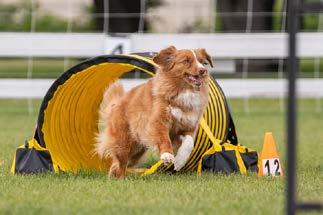
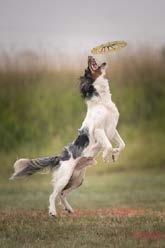
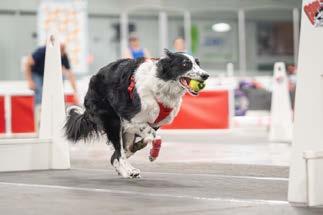
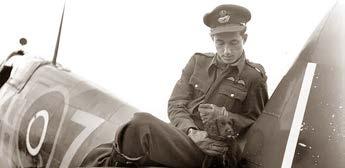
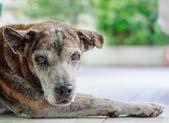

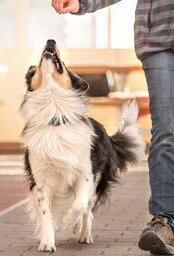



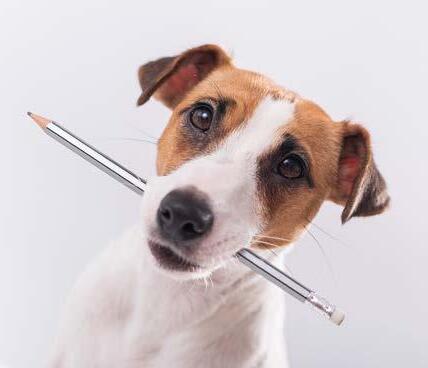
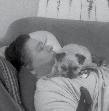
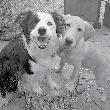
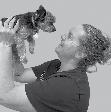

Rob’s poetry and short stories have been published in print and on line. He has a BA in English Literature, and has worked for 17+ years as an Emergency Medical Dispatcher. He spends a significant portion of his free time impersonating a dog bed.
Emily is a Dog Trainer and Behaviour Specialist with over 10 years of experience in SK and BC. She enjoys hanging with her pack and participates in flyball, agility, rally-o, and stunt. Emily and her rescued Border Collie Jinks became the first titled Canadian Stunt Dog Team.
Carly is the owner of House of Paws Pet Boutique and is certified in a variety of pet nutrition areas. Carly believes in continuous learning and when she’s not working with pet parents at her store, she spends her time developing new and engaging methods to empower pet parents to make the best choices for their pet’s nutrition.
Lisa operates Brice Photography out of her home studio with her faithful sidekick Chloe. She knows how important pets are to a family and enjoys being a part of the process in creating something special to display in her clients' homes. Lisa says the best thing about being a photographer is the fun and laughter during a session.
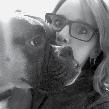

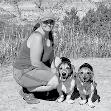
Tracy is a multimedia designer and desktop publisher by day, and a dog sport and training enthusiast by night. Her Olde English Bulldogge, Jack Russell Sport Mix and Mini Heeler Mix keep her busy doing flyball, nosework, agility, and tricks.
Nicole is a veteran dog groomer, trainer, and partner of the Good2Go Dog Sports Club. When she’s not busy making dogs beautiful, you can find her playing flyball, barn hunt, disc, tricks, and agility with one or more of her pack.
Eryn has been involved in SDDA Scent Work for 8 years. She is the owner of HD – Scent Detection teaching classes and running a working group. Scent Work is her passion and she plays with her 3 dogs – 2 Basset Hounds and a Sport Mix. She also plays Flyball, Barn Hunt, Disc and loves training a variety of tricks and performing!
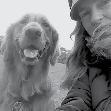
Jennifer is a Certified Dog Behavior Consultant and Trainer with over 19 years experience. She specializes in identifying the underlying causes of dog behaviours and empowering dog guardians to use reward-based methods to support their dogs’ emotional, mental, and physical well-being. In her spare time, Jennifer volunteers for the Canadian Association of Professional Dog Trainers.






Body energy and the influence it has on your dog.
Yoga, Chi Gong, Tai Ji, or any meditation practice focuses on breathing, calmness, and controlled movement. So why not incorporate that into dog training?
Dogs are finely tuned to the emotion and energy levels of their humans and often will mirror behaviour. If you are calm and collected, it can help your dog feel secure and focused. On the other hand, if you are excited or anxious, your dog may become hyper or nervous, making them more challenging to manage.
Dogs thrive on routine, consistency, and the energy you bring to the relationship. Balancing energy can play a significant role in training and affect how your dog responds to you and your environment. Confident, assertive body language can reinforce training and encourage positive behaviour. Keeping your energy levels consistent will help your dog understand what to expect, give them confidence and look to you, its handler, for direction.
Different activities may require different energy levels. High-energy activities, like some dog sports, may benefit from higher energy, while more focused obedience tasks like sit and stay may require a more calm energy. Environmental factors can affect your energy too. A loud and busy setting may increase stress or excitement, and being aware of that can help you adapt to the environment to create a more balanced atmosphere.
During training, when rewarding your dog, your energy can enhance the effectiveness of the reinforcement. An enthusiastic tone and positive body energy while rewarding your dog with treats or praise can make the reward more appealing.
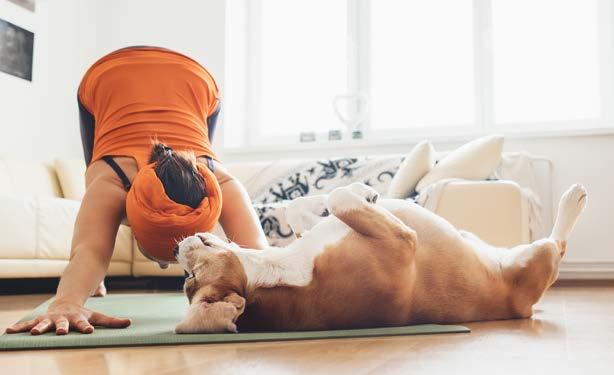
Being mindful while training will help identify when your dog becomes overstimulated, over-tired or hyper and will lead to better training sessions. Keep it short, don't get frustrated, and set yourself and your dog up for success. Always end on a positive and successful note.
Being aware of your body's energy can enhance the experience for both you and your dog. Matching energy for the task at hand can benefit learning and behaviour for a happy and successful training session.
As Remembrance Day approaches, we look back to show our respect and honour the men and women who served our country. In Canada, on November 11th, we take a moment of silence to observe and reflect on the war efforts, loss of lives, and the freedoms and opportunities these service members bravely fought for.
Service and working dogs have existed long before being given any formal title or designation. By the end of the First World War, an estimated 20,000 to 30,000 dogs served with Britain and its allies.
The roles they served were watchdogs, messengers, medical assistants, mascots, or simple companionship. Dogs helped dig tunnels and hunted mice and rats in the trenches, warned soldiers of coming raids, and at times were the only way to get messages back once communication was lost. They carried medical supplies to the wounded on the battlefield, often staying with them until help arrived. The Red Cross trained hundreds of dogs for these roles.
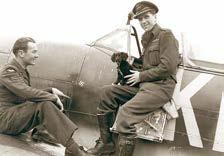
In the above photo, Mascot puppy Lucy charms its way into the heart of pilot Roy Wosniak (R) and fitter Sergeant Delong. The photo to the right is Pilot Officer Willie Lane with Lucy. The look of gentleness on his face tells us how much comfort these dogs were capable of giving these stressed young men.
Photos were estimated to have be taken in May 1943. Credit Dean Black of Airforce.ca for the identities of the airmen. Photos via Magnumcharger on Flickr
When anxiety and stress were high, there was a bit of relief with the companionship of The Squadron Dog. Possibly a stray or starving puppy that wandered into the fold. These dogs were adopted by the squadron and they provided unconditional love, making things a little less lonely. Dogs gave the crews a sense of comfort and a temporary release from reality while away from home.
When units transferred, the war was winding down, or worse, their masters didn't return from a mission - the dogs often were adopted by other airmen or crew. Sometimes, the dogs would emigrate to Canada when the squadron returned.
A sure way to feel comfort and affection is to give it. Saving lives or boosting morale they played a needed role and, with wagging tails, were always happy to see you.
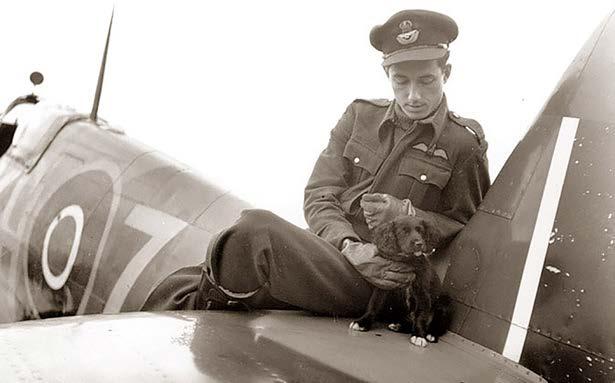

Airedales were considered war heroes serving in WWI and WWII. The duties of the Airedales eventually evolved from delivering messages, to finding wounded soldiers and calling for help.

Airedales were trained to wear gas masks and carry first aid and supplies for soldiers. They were widely used by the Red Cross on the battlefield, as well as carrying messages for the military and acting as guard dogs.
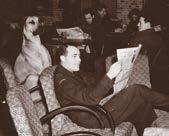
Group Captain Bill “Iron” MacBrien, otherwise known by the pilots as “Tin Willy” owned this massive Great Dane, reading over the shoulder of McBrien in this set up shot. Photo via Dean Black of Airforce.ca.
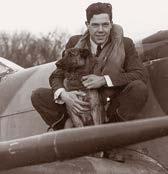
RCAF Pilot Officer Hugh Constant Godefroy and the 403 Squadron mascot. 403 Squadron was known as Wolf Squadron, so they had a particular love of canines, wild or domesticated.
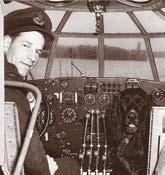
422 Squadron RCAF mascot, Straddle takes the co-pilot's seat in a Short Sunderland flying boat. 422 flew the massive Sunderlands on coastal and submarine patrols and Straddle was known to go on these patrols. In the left seat is Flight Lieutenant Lloyd Detwiller. Photo via Pembroke Sunderland Trust//Boxbrownie3

The earliest photographs of the squadron dog date to before the First World War, but it was conflict itself that created the need for young men to have the love of the canine variety. These two Royal Flying Corps young men are delighted to show off their almost Jack Russell puppy before setting out on a mission.

A bronze, life-sized statue of a medical service dog stands guard over the dedication. It is wearing an authentic replica of a medical backpack that war dogs used during the First World War. The Animals in War Dedication was created in 2012 by Canadian artist and sculptor David Clendining. Photo credit: Veterans Affairs Canada.
vintagewings.ca/stories/the-squadron-dog jonesfamilyhistory.wordpress.com/2015/10/08/airedale-terrier-amazing-war-dogs/ bbc.com/news/uk-scotland-tayside-central-28681128 mural.themilitarymuseums.ca/panels/row11/214-dogs-of-war veterans.gc.ca/en/remembrance/memorials/national-inventory-canadian-memorials/details/9002
When it comes to senior dogs, it is important to remember that age is not a disease. As their caretakers, we need to be mindful of normal changes in their behaviour compared to those that may indicate pain, which should be addressed with the help of your dog’s veterinarian. We can continue looking for ways to keep their lives enriched throughout their golden years by providing sensory-based and other, gentler activities to help stimulate their minds and keep them moving safely.
1
Provide a nonslip surface for your senior dog to navigate.
2
Skip any scenarios that could create conflict or danger around treats or toys. (Resource guarding or consumers of non-food items.)
3
Keep things spontaneous and fun! Always end activities with your dog wanting more! (Don't let them get too tired, sore, or bored.)
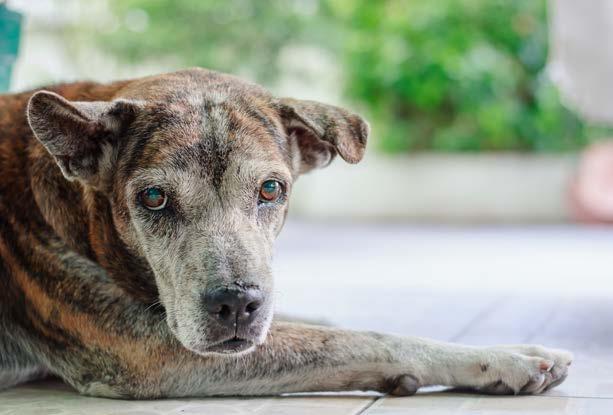
If you have multiple pets, you may want to manage them separately during these sessions.
From snuffle mats to various treat dispensing toys and licky mats, either store-bought or homemade, there are many options to make meals and snack times more interesting for your senior dog. Even something as simple as putting your dog’s dinner in a muffin tin (with or without tennis balls on top), in cardboard boxes or tubes (open or closed), or rolling treats up in a towel can all provide mental and physical stimulation. Scattering kibble or hiding treats around the house or yard can also be a fun challenge. Just be sure to adjust your dog’s regular rations if using treats to avoid unwanted weight gain. If your dog seems to be losing interest in food, or if they’ve begun to unexpectedly gain or lose weight, be sure to talk with your veterinarian about potential health issues that may be the cause.
Dogs process much of their environment through their incredible sense of smell. Even though their senses may dull with age, and they may not be able to wander as far as they used to, providing opportunities to sniff out new things away from or around the home can help keep life interesting for a senior dog. This may look like spending time making walks less about “doing business,” or just getting from point A to B. Find novel safe spaces to let your dog explore off-leash or on a long line. If walks are no longer in the cards, you might consider a stroller or wagon for your dog to get around in, or

bring some different items home now and then for them to check out!
Making fetch, tug, or various tricks less intense and easier on a senior dog’s body can help keep them active without injuring themselves. Being held back or put in a stay so your dog isn’t haphazardly chasing a thrown toy in motion, or training your dog to go out around a cone before returning to a toy to encourage more thoughtful movement are good examples of fetch alternatives. Tricks like bow, controlled spins, shake a paw, and paws up can double as fitness exercises, but repetitions of any activity should be limited and may not be appropriate for all senior dogs. Even if you haven’t noticed any soreness or limping, consulting with a veterinary rehab professional can provide personalized information on stretches and exercises that are appropriate for your dog’s body, not to mention various modalities or medications that might help keep your dog more physically comfortable over time.
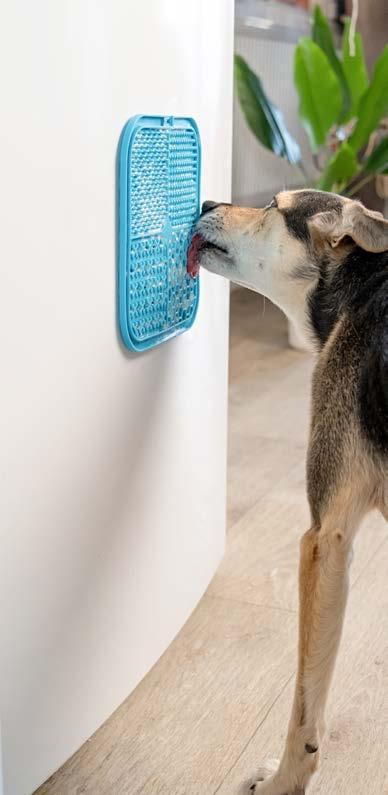
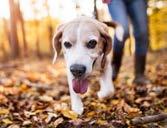
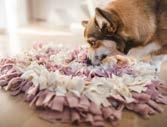
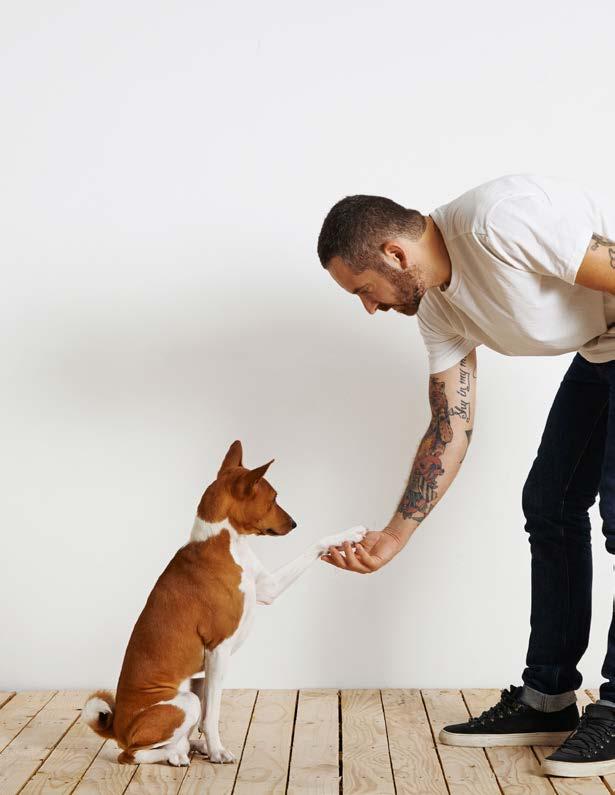
Often when students start a new activity with their dog, those with the talented dogs stand out. They fly through basic skills, even if the handler has zero skill or timing. The dog is so talented the handler doesn't need to learn a lot as the dog's talent is enough.
For awhile anyway.
At a certain point talent only goes so far and slowly but surely training holes appear that are nearly exclusively a handling problem. But because the talented dogs have been prodigies for weeks or months, the handler starts questioning the dog's ability. Their side of the bargain is rarely taken into question.
Most of the time these students eventually leave. Sheer talent on the part of one member of the team is not enough to hold long-term.
On the opposite side of the spectrum you have invested handlers with quirkier dogs. Fearful dogs. Dogs who lack confidence. Dogs who get too aroused. Dogs who are very capable but aren't standouts in the first few weeks,
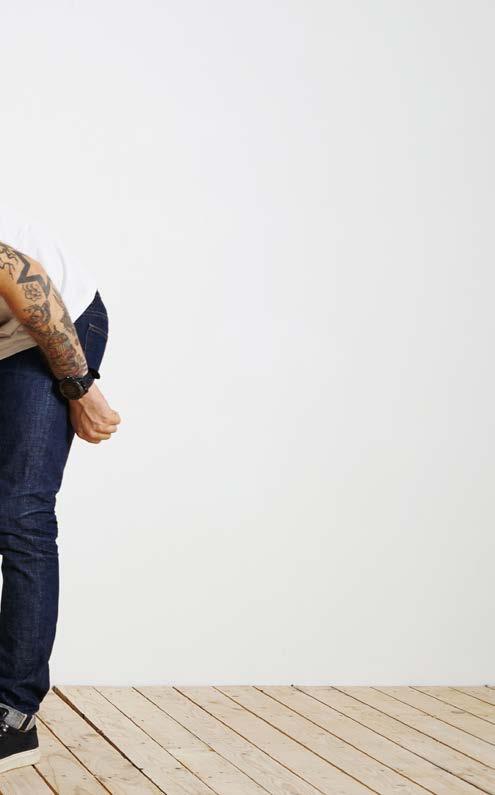
months or even years. They get better slowly, but are continually improving.
However, if these teams stick, their humans do their homework. Invested human learners break things downthey need to. They learn to observe. They learn to handle. They need to. The dog isn't going to gift them with 100% of the work. So the invested learners put a lot of effort into their side of the leash and slowly, through clarity, confidence and time, the quirks fade and the dogs understand the job.
The two types of students are often on opposite trajectories. As the talented dog starts to fade because his handler hasn't needed to put in the human work, the invested learner is getting their legs under them and the team is blossoming.
This boggles the teams with the talented dogs. Their dogs used to be
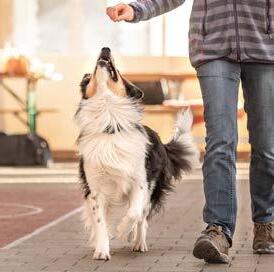
the amazing dogs. Why aren't they anymore?
Some pick up their socks and start putting the work in. Most decide that the sport isn't really for their dog.
Moral of the story: no matter how talented your dog is, YOU are the most important part of the puzzle. Those who do the work reap the rewards. Do not ignore your end of the relationship. Also never count your "initially not so talented" dog out. Go slow, but keep going.
EMILY GARLAND, CPDT‑KA, MFA Trainer and Behavioural Specialist
No matter how talented your dog is, YOU are the most important part of the puzzle.
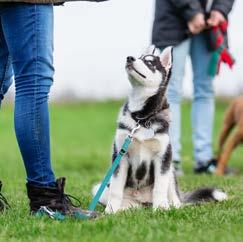
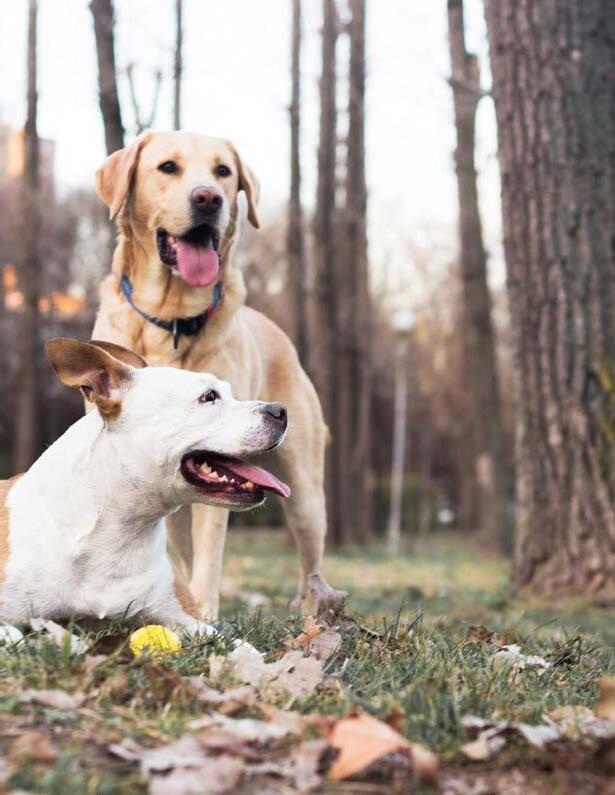
Dog parks can be wonderful places for dogs to run off leash and play with other dogs, but some people avoid them because of the risk of dog fights. How common are dog fights at a dog park? Well, that depends a lot on the design of the park and the behaviours of the park users — the dogs and the humans. While you may not be able to change the design of the dog park or control the behaviours of others using the park, there are some simple things you can to do to help ensure that your dog has a happy, conflict-free visit.
Consider if your dog is a good fit for a dog park. Dog parks are intended for dogs that enjoy meeting unknown dogs. Unfortunately, sometimes people find out the hard way that their dog is not well-suited to a dog park environment; and in some cases, well-meaning but misinformed caregivers make the mistake of using the dog park to try to teach their dog to like other dogs. If you enjoy the dog park more than your dog does, it is better to leave your dog at home, for your dog’s sake and others using the park.
Dogs communicate a lot through body language and some signals are subtle and easy to overlook. Learn what appropriate dog play looks like and watch for signs of stress, especially lowered or hunched postures with tails tucked.
The 2014 study “Identifying behavioral precursors to play-induced aggression in pet dogs in public off-leash dog parks” (Mehrkam, L., et. al) looked at play bouts in dog parks to determine which behaviours could predict that a play bout would lead to play-induced aggression. The study found that there wasn’t one particular behaviour that predicted play-induced aggression but that the aggressor often showed clusters of “defensive” behaviours such as running away from the other dog, squirming, a tucked tail, exposing the belly, snapping, and growling.
Dogs who play well with their friends but haven’t had much experience playing with unfamiliar dogs might be too rough when playing with new dogs. Some dogs don’t play well together because they have incompatible play styles. Avoid pressuring your dog to play with another dog because forced interactions can easily lead to a dog conflict. If you are not sure if both dogs are enjoying the play bout, try a consent test: interrupt the dogs’ play by calling the dogs away from each other, then let the “underdog” — the dog who is less assertive, the one frequently on the bottom during wrestling, or the one being chased — choose to resume play or not.
Dogs tend to avoid conflict by moving away but when there isn’t enough space, dog fights are more likely to occur. You can help by avoiding crowded areas within the park, going to the dog park at non-peak times, and leaving when it starts to get crowded.
How much space do dogs need at a dog park? The answer depends on the dogs present, but some research suggests dogs need at least 5000 square feet per dog in a dog park environment where unfamiliar dogs are interacting and playgroups are constantly changing as dogs come and go.
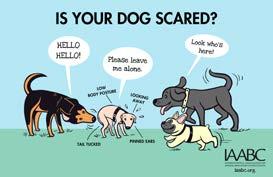
The entrance area inside the dog park can be very busy with dogs racing around and running up to the gate to meet new arrivals, so it’s no surprise that most dog conflicts occur within 100 ft of the entrance, with the majority of these occurring within 20 ft of the entrance. You can help reduce the risks of dog conflicts by waiting until there are fewer dogs near the gate (or using an alternate entrance), immediately moving farther into the park while encouraging your dog to follow you, calling your dog away from dogs entering the park, and avoiding high risk activities near the entrance area such as throwing a toy or looking at your cell phone.
Resist the urge to look at your cell phone or do other activities that take your attention away from your dog. Watch for signs that your dog is uncomfortable or that your dog’s behaviour is making others uncomfortable. At some point you might need to call your dog away from unruly or fearful dogs, so practice calling your dog to you periodically during your visit to test if your dog is able to respond to your voice. It’s also a good idea for your dog to take mini-breaks from play because excessive, intense play can escalate to a dog fight.
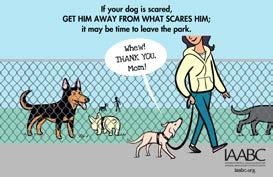
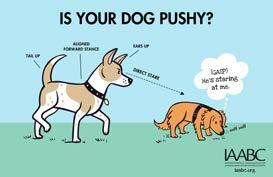
You may want to carefully monitor wrestling type play and playgroups with more than two dogs. The 2014 dog park study mentioned earlier (Mehrkam, L., et. al) found that playinduced aggression occurred more often in play groups with three or more dogs than playgroups with two dogs, and that social wrestling was more likely to end in play-induced aggression (when compared with chasing and play that involved a toy). You might also want to be extra attentive when you see adult dogs interacting with male adolescent dogs. A 2003 dog park study “‘Bark Parks’ — A Study on Interdog Aggression in a Limited-Control Environment”(Shyan, Fortune, and King) found that of the fourteen aggressive incidents observed, most aggressors were adult dogs and most recipients were male dogs less and a year old.
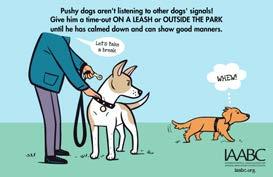
If you and your dog are physically able to, it’s a good idea to keep walking throughout the park because dog conflicts are less likely to occur when the caregiver is walking instead of sitting or standing around. You and your dog are more attentive to each other when you are moving along together and you will be better able to notice early signs of a conflict brewing.
Just like people, dogs are less tolerant of stressors when they are tired, so don’t stay too long. As well, be willing to leave early if you are concerned about the behaviours of other dogs or people in the park. For example, if a dog fight occurs and the aggressor isn’t immediately removed from the park, you may want to leave because the aggressor is more likely to be aggressive towards other dogs after a conflict.
Consider alternatives to a dog park.
Dog parks can be great but they are not for every dog. Thankfully, there are other options such as private playdates, sniff walks on a long leash, and well-run social dog walk classes. You might discover that you and your dog enjoy these more than the dog park.
JENNIFER BERG, CPDT KA, CDBC Oberhund Dog Services & Products
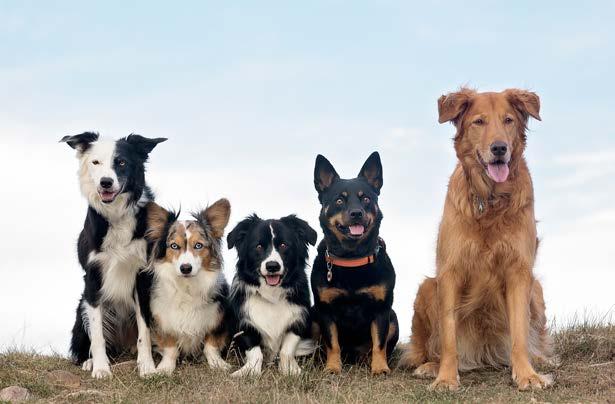
Poster artwork created by Lili Chin and provided through the IAABC.
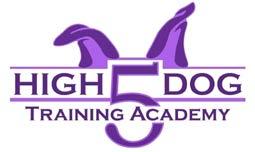
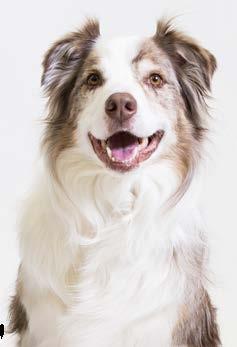
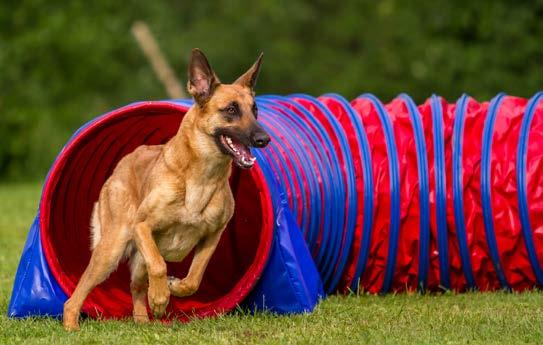
In our fast-paced world, where digital photos are often fleeting and buried within our phones or cloud storage, there is something profoundly special about a wall portrait hanging in your home. A carefully chosen and beautifully created portrait can become a daily source of joy, and comfort, and a lasting tribute to the love and memories that define our past, present, and future.
An image of your family or pet offers a way to pause, reflect, and hold onto those precious moments, the big smiles from children, and a dog with its tongue out. It’s a reminder of the time you’ve spent together, the experiences you’ve shared, and the journey you’ve travelled as a family and pet owner.
Imagine sitting in your favourite chair, perhaps after a long day, and looking up to see a portrait of your family or pets. Every time you glance at that portrait, you are reminded of the special connections, the laughter, the milestones, and the adventures that define your relationships. By displaying them proudly in your home, you’re honouring those memories and keeping them close to your heart. A portrait serves as a constant reminder of the gift of love that holds immeasurable value in our lives.
As we grow older, or as our pets and people age, these portraits become even more valuable. They allow us to remember our loved ones as they were, capturing a moment in time, that we can revisit whenever we need to feel close to them. This can be especially comforting in times of loss, as the portrait serves as a visual connection to those who have passed on, allowing their memory to live on in our hearts and our homes.
Unlike material possessions that lose their value over time, the emotional worth of a portrait only grows.
As the years go by, this simple image becomes a treasured heirloom, something that can be passed down through generations, each time bringing with it the stories and memories of those who came before.
There’s something incredibly grounding about being surrounded by images of the people and pets you love. They anchor you to what truly matters, helping you stay focused on the important things in life. These portraits can transform a house into a home, filling it with warmth and personality, and a daily reminder of the love within its walls.

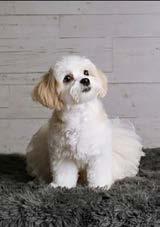
A wall portrait is a lasting testament to the things that truly matter. It’s a daily source of joy, comfort, and connection, and its value will grow as time goes by. So, the next time you’re considering what to hang on your walls, remember that a portrait of your family is a true treasure—it’s a celebration of life, love, and the moments that make it all worthwhile.

LISA BRICE
Article and photo in frame by Brice Photography.

In the dog sport of scent detection, a partnership between handler and dog is a delicate balance. Leash handling is a skill, and mastering this skill isn’t easy. It goes beyond just holding on to a leash and watching your dog in a search area.
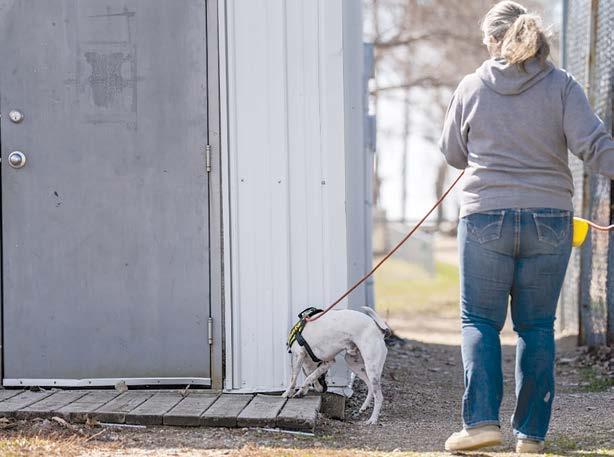
In scent work, the handler has to make sure the leash doesn’t tighten, drag, or tangle between the dog's legs or objects in the search area. Along with leash handling skills, the handler should strive to stay out of the dog’s way, be able to collect and release the leash and lift and lower the leash based on the dog’s behaviour in the search area. The ideal picture is to have the dog work on the leash as if there is no leash attached at all.
When a dog goes into a room to find odour they do not think about what their leash is doing, how their leash could potentially restrict them, or how their leash will get in the way when searching for odour. That is our job as
the handler. The dog will dart, turn, slow down, speed up, go under and potentially over things to get to the source. We have to be quick on our feet, with our hands and maneuvering the leash to allow the dog to do their part of the job.
A leash that tightens while the dog is searching preventing them from moving forward to the source of the odour could easily take the dog out of sourcing and can discourage continued movement to the source. A leash that gets tangled in an object or between your dog’s legs because it is dragging in a search area means stopping the search, your dog and your team lose focus, and you need
to reset the search. A leash that is too short means you are on top of your dog, giving unintentional body pressure, this will block your dog from working odour cones to their full ability. All of these things will be frustrating for your dog, and for you while in your search area. Your leash is a tool that enhances your connection between the team, you and your dog, not something that should hinder it. If you find you are fumbling with the leash during a search you are not alone! The good news is that we can learn leash-handling skills!
Leashes made of biothane, rope or nylon are the most popular and easiest to manipulate. The ideal length of a leash for scent work is 1012ft for most dogs. This will allow the dog to move away from the handler to the far end of the leash and give the handler a full view of the dog when it is working the odour. Typically, the handler should try to stay behind the dog or parallel to the dog when possible. Of course that can change when you are in a tight space or have to move around obstacles like a desk with a chair.
Perfecting leash handling for scent work should start without a dog on the end of the leash. Getting comfortable with the leash by collecting and releasing it is a good place to start. But how do you practice without a dog? Attach the leash to a stationary object like a chair. To begin, get a feel for your leash by moving toward and away from the object and practice collecting and releasing your leash so it doesn’t tangle, tighten or touch the ground. You can add the dog later!
A fun exercise in leash handling is to attach the leash to another handler and have them act as the “dog”! The “dog” will make their way around a room with a variety of objects in it. The "dog" role will speed up, slow down, and make sharp and tight turns to mimic a dog searching for odour. This exercise is valuable to both ends of the leash. The handler end of the leash will get comfortable manipulating a leash and the "dog" role has a chance to feel what it is like to be restricted by poor leash handling. You will soon see how important it is for the two ends of the leash to work together and operate as one unit.
There are many things we train our dogs to do in scent work and often we forget that we are the other half of a team that also needs training. The onus is on us, the handlers, to train ourselves to manipulate a leash correctly. Leash handling is an art. It is a dance between the dog and the handler. It is a beautiful thing when the dog doesn’t even realize it is attached to a leash but is 100% connected to their handler through that seemingly non-existent leash.
Spend time on your leash handling skills to be the best partner for your dog because your dog is absolutely trying to be the best partner for you every time you step up to the start line.
If you find you are fumbling with the leash during a search you are not alone!
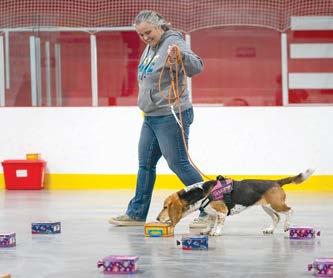
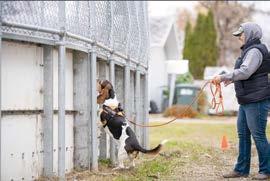
HD Scent Detection
PHOTOS BY Lianne Matieshin Photograpy
The holidays are full of hustle and bustle and much excitement for the whole family, including our pets! While filled with joy and laughter, it's important to keep a few things in mind.
It's tempting to share our festive feasts with our pets, but some foods can be harmful. You'll want to ensure no one is slipping dangerous snacks to them. Foods considered to be toxic:
CHOCOLATE contains theobromine and caffeine that can be harmful or fatal for dogs.
GRAPES and raisins are highly toxic to dogs and can cause kidney failure.
ONIONS can cause anemia by damaging red blood cells.
XYLITOL is an artificial sweetener used in some brands of peanut butter, gum and toothpaste. Even small amounts can cause hypoglycemia, seizures, liver failure, or even death.
MACADAMIA NUT ingestion can lead to muscle weakness, CNS depression, vomiting, and hyperthermia (high body temperature).
When bones are subject to high temperatures, they become brittle and tend to shard. Those sharp shards can do a lot of damage to the digestive tract, pose a choking hazard, and potentially damage teeth. The best thing for our pets is to feed them raw, meaty bones only and toss the cooked bones in the trash.
Many people don't know the dangers of rawhide chews. They are one of the most popular "treats" for dogs and can come with some serious risks.
Beyond being a choking hazard and the number one cause of digestive blockages, rawhide products are not even by-products of the meat industry, they are a by-product of the leather industry. The
discarded leather is processed with harmful chemicals like formaldehyde, bleach, paint and other toxic substances to make them look like dog chews.
Save a trip to the veterinarian and choose healthier, natural chews that are fully digestible and safe for our pets!
Tinsel and glittering or glass ornaments make the season shimmer with beauty, but they also can be enticing for our pets! These shiny things can cause serious health issues if ingested. Rather than take the chance, opt for pet-friendly decorations and keep the lower branches of your Christmas tree free of easily accessible trinkets that can be captured by a furry friend on the hunt!
The excitement and noise of holiday celebrations can be overwhelming and cause unnecessary stress for our pets. Even though we want them to be part of the festivities and they want to participate too, it is always best to set up a quiet, cozy space where they can retreat and find some peace. They can enjoy the holidays while still having a place to relax all to themselves.
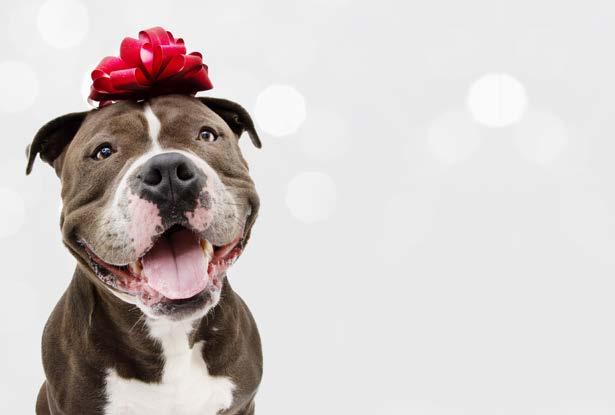
Do you have a story you would like to share?
PAW Quarterly invites you to submit your story for a chance to get published in an issue of PQ.
Get published in PQ!
Email: publish@pawquarterly.com

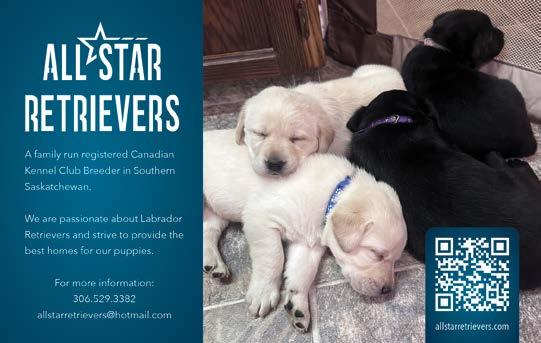
While you are getting ready for all the little ghosts and goblins coming to your door this Halloween, you can conjure up a little something for your pups too!
If your dogs are happy to see new faces come knocking on the door it could be fun to involve them. Do some tricks for your guests, practice impulse control exercises, or good manners, like staying in "place" while you tend to your guests. Be sure to reward them handsomely for their good behaviour.
These tasty ghost-inspired treats will have your pups "begging" for more!
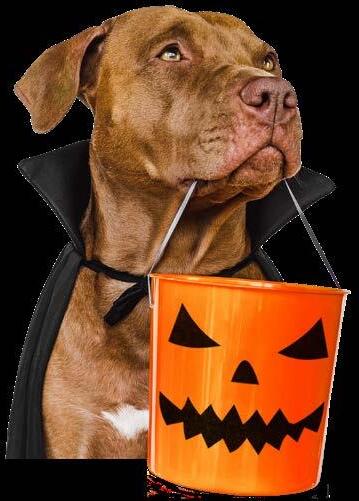
Remember to use pet-safe ingredients. Read your labels. Xylitol, a sweetener in many products that is toxic to dogs, could be listed as wood sugar, birch sugar, and birch bark extract.
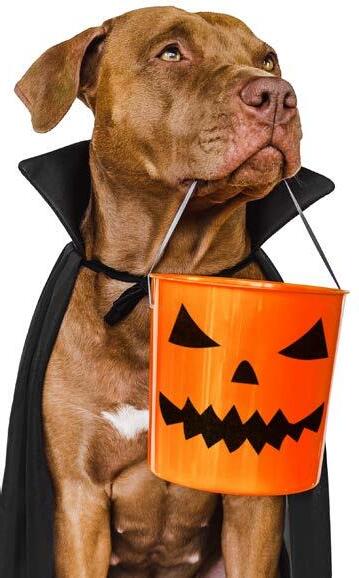
• 1 cup blueberries fresh, frozen, or dried
• ¾ cup oats
• 2 ½ cup whole wheat flour
• 2 eggs
• 3 tablespoons dog safe peanut butter
• ½ teaspoon ground cinnamon
• ½ cup warm water or bone broth
Preheat your oven to 350°F.
1. Mix roughly chopped blue berries, and oats. Add the flour, eggs, salt, peanut butter, and cinnamon until everything is mostly combined.
2. Add about 1/4 cup of warm water or broth to the dough, and mix until it sticks together in a ball. If the dough seems dry, add warm water in ¼ cup increments.
3. Roll out your dough to about half an inch thick and cut the treats out using your favorite cookie-cutters.
4. Place cookies on a lined baking sheet bake for 40 minutes, until the cookies are hard.
Recipes are intended to be a treat and not intended to replace a full balanced diet. If your pet has any health issues, or if you have any concerns, consult your pet’s veterinarian before offering this treat to your dog.


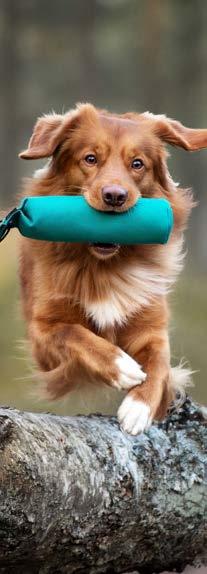
OCT 11 13, 2024 SK
AAC Agility Trial
Standsure Agility Club
3D Distributors (indoor) 395 - 38 St E, Prince Albert, SK facebook.com/groups/www.bordercollie.ca standsure@sasktel.net
OCT 11 13, 2024 SK
BARN HUNT
Cultured Canines
Flatlands Kennels Boarding and Training SE25-48-23W3 RM, Maidstone, SK culturedcanines.ca info@culturedcanines.ca
OCT 12/13, 2024 AB
AAC Agility Trial
Alberta Herding Dog Rescue
Rocky View Arena
274141 twp rd 240, Rocky View County, AB albertaherdingdogrescue.ca swineyc@xplornet.ca
OCT 11 13, 2024 SK
BARN HUNT
Westman Rat Wranglers
4Limb Gym-Gym Rats Building
South Service Road East, Regina, SK tinyurl.com/Westman-Rat-Wranglers mayleefischer@hotmail.com
OCT 18 20, 2024 AB
BARN HUNT
Prairie Dog Sports
Lacombe and District Agricultural Society Show Barn, 4210 58 St, Lacombe, AB prairiedogsports.ca prairiedogsports@outlook.com
OCT 18/19, 2024 SK
SDDA Nosework Trial
East Hill community Club
290-23 St E, Prince Albert, SK www.sdda.ca kingfisher@sasktel.net
OCT 19, 2024 AB
SDDA Nosework Trial
Sundog Agility
3102 5th Ave. N, Lethbridge, AB www.sdda.ca cinbarkley@gmail.com
OCT 19/20, 2024 AB
SDDA Nosework Trial
Ultimate Safety
4109 47 Ave, Olds, AB www.sdda.ca freschettes@gmail.com
OCT 19/20, 2024 AB
AAC Agility Trial
OC Agility
Sturgeon County Agriplex - Indoors 25021 Twn Rd, 554, Morinville, AB ocagility.com trials@ocagility.net
OCT 25 27, 2024 MB
BARN HUNT
Westman Rat Wranglers
Quarry K9 Day Camp & Resort Inc. NE corner of Hwy #7 & Hwy #67 77027 PTH 7, SW34-13-2E, Stonewall, MB tinyurl.com/Westman-Rat-Wranglers quarryk9@gmail.com
OCT 26/27, 2024 SK
AAC ‑ Agility Trial
Moose Jaw Dog Club
Golden Mile Arena (indoor) 250 Thatcher Drive, Moose Jaw, SK moosejawdogclub.com maxmigi@sasktel.net
OCT 26/27, 2024 AB
AAC ‑ Agility Trial
Dynamo Dogsports Training Hall 9519 49th ste, Edmonton, AB dogsport.org dogsport.org@hotmail.com
OCT 26/27, 2024 AB
AAC Agility Trial
Sundog Agility
Vale Prairie Trails (Indoor) 81011 RR 205, Lethbridge, AB sundogagility.com sundogagility@gmail.com
NOV 2/3, 2024 AB
AAC Agility Trial
OC Agility
Sturgeon County Agriplex (indoor) 25021 Twn Rd, 554, Morinville, AB ocagility.com trials@ocagility.net
NOV 7, 2024 AB
AAC Agility Trial
Free Spirit Dogs #103 & 104 2321 - 9 St, Nisku, AB freespiritdogs.com hannah@freespiritdogs.com
NOV 8/9, 2024 SK
AAC Agility Trial
Standsure Agility Club
3D Distributors (indoor)
395 - 38 St E, Prince Albert, SK facebook.com/groups/www.bordercollie.ca standsure@sasktel.net
NOV 8‑10, 2024 AB
BARN HUNT
Cultured Canines
Sleep Rover, Side building 735 41 Ave NE, Calgary, AB culturedcanines.ca info@culturedcanines.ca
NOV 9/10, 2024 AB
AAC Agility Trial
Calgary Agility Association
Al Azhar Fezdome (indoor) 5225 101 Street NW, Calgary, AB calgaryagility.com nanjorg1@telus.net
NOV 9/10, 2024 SK
FLYBALL
KAOS Dog Sports
1311 Ottawa St, Regina, SK kaosdogsports.ca 1dogaholic@gmail.com
NOV 15 17, 2024 AB
BARN HUNT
Prairie Dog Sports
Lacombe and District Agricultural Society
Show Barn, 4210 58 St, Lacombe, AB prairiedogsports.ca prairiedogsports@outlook.com
NOV 16, 2024 AB
AAC ‑ Agility Trial
Rocky Mountain Agility Club
Okotoks Agricultural Society (indoor) Okotoks, AB rockymountainagility.com rmactrialsecretary@gmail.com
NOV 16/17, 2024 AB
AAC Agility Trial
Free Spirit Dogs #103 & 104 2321 - 9 St, Nisku, AB freespiritdogs.com hannah@freespiritdogs.com
NOV 23, 2024 SK
AAC Agility Trial
Moose Jaw Dog Club
Golden Mile Arena (indoor)
250 Thatcher Drive, Moose Jaw, SK moosejawdogclub.com maxmigi@sasktel.net
NOV 23, 2024 AB
AAC Agility Trial
Flashing Canines Agility Club
Steiners Arena 17455 Hwy 875, Tilley, AB flashingcanines.ca/ michellelarsonfk9@hotmail.com
NOV 23/24, 2024 AB
AAC ‑ Agility Trial
Dynamo Dogsports Training Hall 9519 49th ste, Edmonton, AB dogsport.org dogsport.org@hotmail.com
DEC 7/8, 2024 AB
AAC Agility Trial
Dogs At Large Neitak Equestrian Centre 50416 RGE RD 10, Stony Plain, AB dogsatlarge.ca zazulat@telusplanet.net
DEC 8 10, 2024 AB
BARN HUNT
Cultured Canines
Sleep Rover, Side building 735 41 Ave NE, Calgary, AB culturedcanines.ca info@culturedcanines.ca
DEC 12/13, 2024 AB
AAC Agility Trial
Free Spirit Dogs #103 & 104 2321 - 9 St, Nisku, AB freespiritdogs.com hannah@freespiritdogs.com
DEC 13 15, 2024 SK
BARN HUNT
Westman Rat Wranglers 4Limb Gym-Gym Rats Building South Service Road East, Regina, SK tinyurl.com/Westman-Rat-Wranglers mayleefischer@hotmail.com
DEC 13/14, 2024 SK
AAC ‑ Agility Trial
Furever Fun Dog Training
Over The Top Riding Arena Moose Jaw, SK dsweekes.wixsite.com/furever-fun dsweekes@shaw.ca
DEC 14/15, 2024 AB
AAC ‑ Agility Trial
Dynamo Dogsports Training Hall 9519 49th ste, Edmonton, AB dogsport.org dogsport.org@hotmail.com
DEC 28/29, 2024 AB
AAC Agility Trial
Dynamo Dogsports Training Hall 9519 49th ste, Edmonton, AB dogsport.org dogsport.org@hotmail.com www.flashingcanines.ca
To see the events calendar or to submit your own event visit pawquarterly.com /events.

